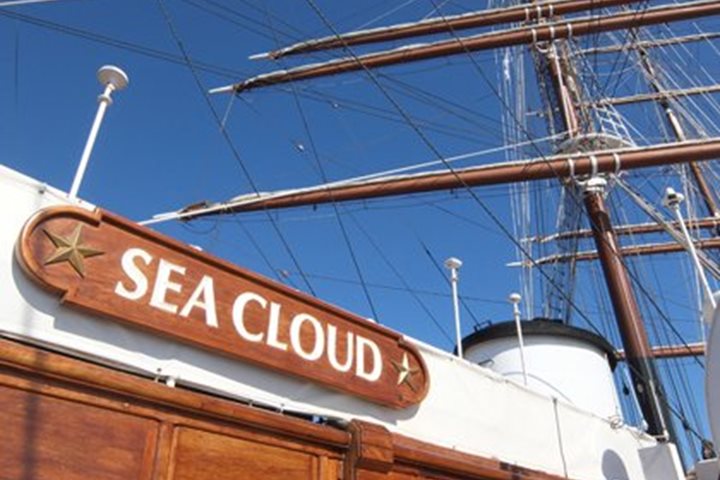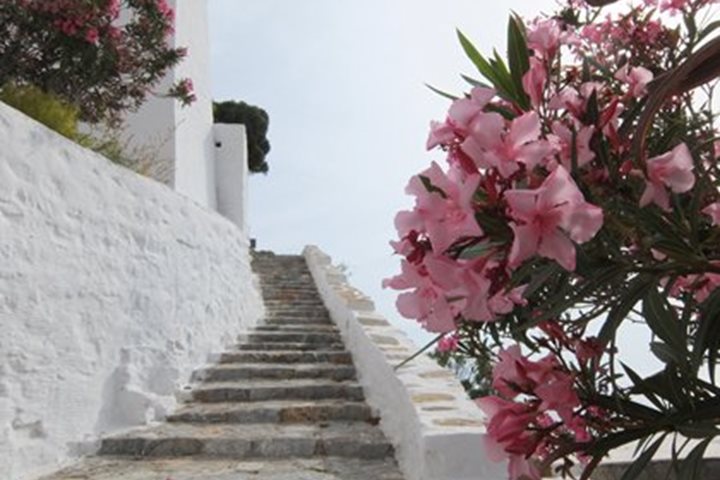Sea Cloud docked early last night, June 13, at the cruise pier in Bodrum. After dinner aboard, some of us walked into town to sample the nightlife. There were crowds of people out and about—shopping, eating, strolling with children, or just taking the night air. Some were foreign tourists like us. Others were Turks, both local Bodrumis and vacationers from other parts of the county. The old harbor was full of small ships, many of them typical two- or three-masted wooden yachts called gulets in Turkish. There was a chatter of voices in half a dozen languages, the clatter of traffic, and under it all, a pounding beat from a beachfront nightclub, the “Halikarnas.” Returning to the ship I became pleasantly aware of the comparative quiet of Sea Cloud.
In the morning we returned to Bodrum town to visit the Museum of Underwater Archaeology in the well-preserved 15th century castle of St. Peter. The museum rambles through the various levels of the castle, with successive galleries exhibiting the results of several decades of underwater archaeology along the southern Turkish coast.
A highlight of the museum was the Uluburun shipwreck, a Late Bronze vessel that went down around 1300 B.C. The ship had been laden with 475 ingots (about 10 tons) of copper and an additional ton of tin, together with an eclectic cargo of ancient Near Eastern luxury goods (elephant and hippo ivory, ebony wood, ostrich eggshells, and terebinth resin), bound perhaps for a royal customer in one of the Mycenaean city-kingdoms.
Departing Bodrum after lunch, Captain Pushkarev ordered the sails set. After the ship reached a cruising speed of about four knots, we were given the chance to go out in Zodiacs, skillfully handled by crewmembers who patiently looked out for us as we took pictures of Sea Cloud under sail.
Later that afternoon I gave a talk about the calamity that ended the Late Bronze Age in the eastern Mediterranean, ca. 1200 B.C., an episode that saw the destruction of Mycenaean Greece, Hittite Anatolia and Canaanite Ugarit, and the near collapse of New Kingdom Egyptian before the onslaught of armed refugees from the Aegean known to the Egyptians as the “Sea Peoples.”
At tonight’s dinner on the lido deck, the main course was a 180-pound yellow fin tuna, presented whole, carved into steaks and grilled to order at the buffet. Szymon (Simon) Kwinta, the ship’s hotel manager, who joined us at our table for dinner, explained that he had bought it in the Kusadasi fish market while the group was visiting Ephesus on Wednesday. “So we’re eating two-day-old fish?” I quipped. Laughing, Simon further explained that it was necessary first to chill the tuna for at least 24 hours before serving it. Judging from the success of tonight’s dinner, Simon certainly knows his stuff.
The same evening we called at the Greek island of Kos to complete customs and immigration formalities before entering Greece and to rendezvous with our two Greek guides, Stella Galani and Effie Perperi. They will accompany us for the rest of our voyage through the Aegean Sea.






